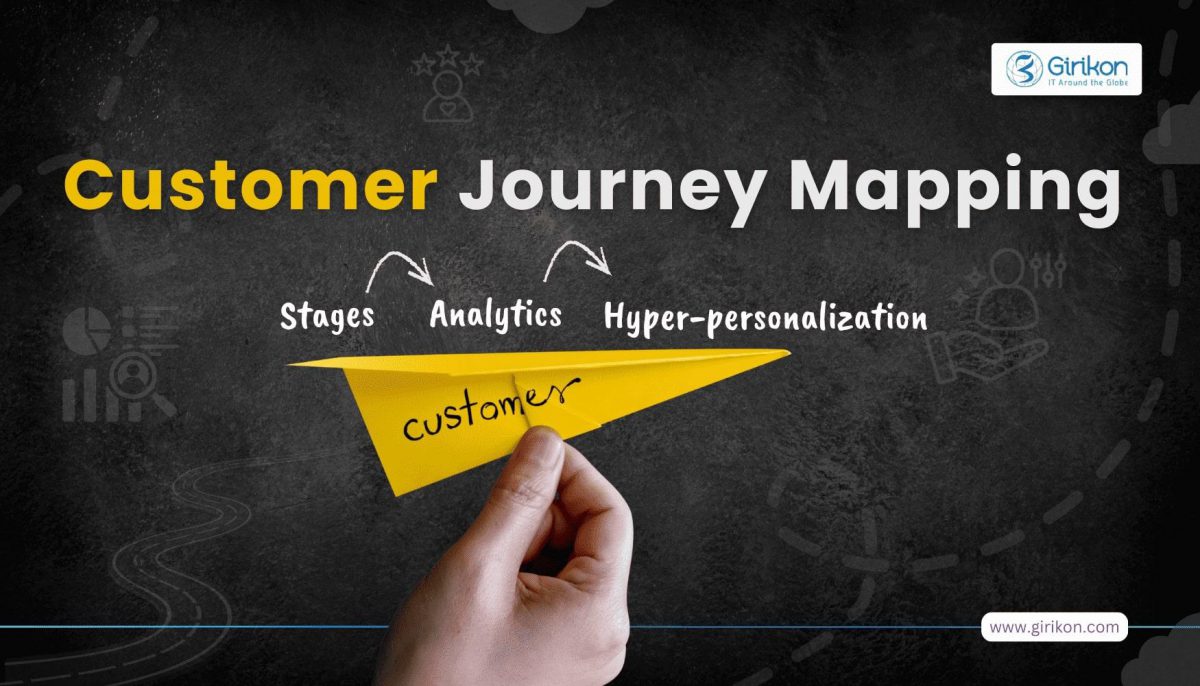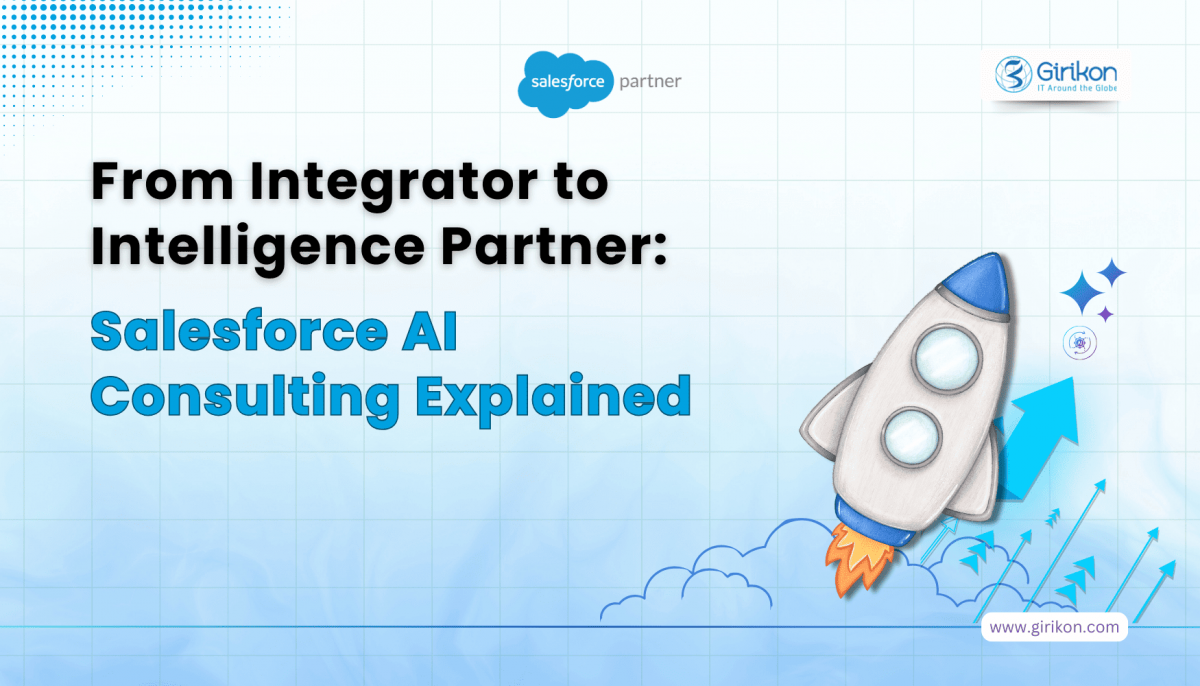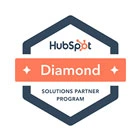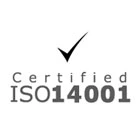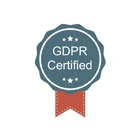At the peak of COVID-19, merchants were making decisions in haste to provide the products and services that customers needed. Today, when the world is far more at ease, these makeshift solutions are now intensifying as shoppers have a plethora of options driving expectations to an all new high. Additionally, their patience is very limited now. In fact, research data across over 2000 retailers suggests that 80% of shoppers are very likely to abandon them after three bad experiences.
Merchants need deeper the insights into customer behaviour to scale up their business. Here are top 4 trends that have been observed across the world on how the retail landscape is changing.
Trend 1: Shopping journeys get more complex
During the 2 years of COVID, three types of digital channels grew their transaction share by almost 40%: brand websites, retailer websites and apps, and online marketplaces. This of course includes transactions through their apps as well. In the process, associated channels like delivery apps, social media, and messaging platforms have also become prominent players in the digital commerce eco system, with a growth of over 20%.
As the range of shopping channels continues to expand, shopping journeys have got more and more complex. The purchasing journey has become fragmented and complex. It is imperative for brands and merchants to develop a one-on-one relationship with customers across platforms namely social media, messaging platforms, and video to stay relevant.
Social media, influencers, and messaging apps have become hugely popular today for product discovery. For making a purchase, social media, digital wallets and email are the leading digital destinations. And when buyers need customer support, they mostly turn to chatbots and social media.
Trend 2: The store goes digital
Although transactions through brick-and-mortar stores decreased significantly during the pandemic, the physical store still plays an important role in the shopping journey. In fact, reports indicate that over 80% of the global merchandise sales happened at physical stores in 2020. The primary reasons shoppers prefer to visit a physical store are firstly, to touch and feel the product, secondly one gets immediate delivery of the merchandise and finally to avoid logistics costs.
However, shoppers today are blurring the lines between digital and physical channels while they are in the store. Many shoppers today research about a product on the retailer’s app while still being in the sore before making a purchase. To compliment this trend, brands and retailers are connecting the in-store experience with an increasing number of digital touchpoints.
The role of the store associate is growing as well. At the peak of COVID, store associates evolved from the routine scanning and bagging to becoming customer service reps, product recommenders, and brand influencers. And these roles are more than likely to stay, which makes the role of the store associate in the customer journey far more intriguing.
Trend 3: The loyalty game has gone a few notches up
Loyalty programs are continuously evolving based on shopper expectations. Although a points-based loyalty program is still the most preferred method today, data indicates that younger generations are seeking a more experience-based journey that establishes a deeper connection with the brand. Millennials today value exclusive access to limited products and richer experiences far more than ever when it comes to loyalty programs.
Shoppers are also seeking rewards for their transactions. They are willing to take a further step such as downloading an app or writing an online review and sharing personal information like their birthday or phone number for a more personalized experience and loyalty benefits.
Trend 4: Brands and Retailers and brands fast track unified shopping experiences
Most customers expect brands and retailers to recognise their unique needs and expectations, but only a portion of them have the capability to turn data into personalized offerings in real time across channels and touchpoints.
To address this customer expectation, and to address the challenges associated with delivering that expectation, retailers and brands are adopting a threefold approach:
HIRING MORE DATA SCIENTISTS
Retailers are actively working to hire more data scientists. And this trend is expected to grow further into 2023. This trend that brands and retailers have the opportunity to overhaul their loyalty programs to meet the rising customer expectations and their openness to share personal data.
ADOPTING A UNIFIED ENGAGEMENT PLATFORM
Many retailers and brands today are already in the planning stage for such a platform, which allows them to access and monetise customer data by engaging with them at a deeper level.
UPGRADING POINT-OF-SALE TECHNOLOGY
Going forward, the pint of sale (POS) will become a critical part of a unified customer engagement platform. In fact, new retailers are already adopting this approach and are moving to a cloud solution.
The in-store digital experience is key for engaging with customers and driving sales. Here are some tips on now to enhance customer experience.
Empower associates with the tools that drive sales
As we mentioned before, store associates are adopting extended functional roles such as customer service, ecommerce, and social media experts to engage with shoppers. To be able to wear multiple hats successfully, store associates need access to customer data along with user friendly digital tools. This is where a CRM platform like Salesforce comes into play. Associates can access complete customer profile with information on purchase history, buying preferences, demographic data, customer satisfaction score, and more.
To get associates up to speed quickly, Salesforce provides digital learning platforms like myTrailhead that bring associates up to speed on how to handle every aspect of digital and physical transactions. Brands and retailers can reskill associates for routine store tasks such as picking, sorting, packing, and shipping to support the fulfilment journey. Store managers can learn to use digital tools to analyze data, access insights and act on them faster than ever.
Maintain real time inventory levels
The greatest enemy of customer satisfaction is out-of-stock inventory. Most shoppers are interested in pre-ordering new or out-of-stock items. This is especially true for fast moving items. Stores can manage inventory levels with a flexible and robust order management system. The order management system connects data across your warehouses and stores to give associates the most accurate status of current inventory. That translates to happy customers.
Offer multiple digital payment options
Customers need more payment options, period. Having just a credit card machine won’t do. In the era of digital, stores need payment types that are minimally invasive and streamline checkout for customers.
Level up store fulfilment
During the peak of the pandemic, there was a scramble to buy online or pick up in store. In fact, some retailers even turned some of their stores to micro-fulfilment centers.
Make sure to:
Clearly communicate important details to customers, such as where to pick up their items from and when.
Clearly communicate to customers what identification they need to provide to pick up their orders
Establish a seamless connect with customer service channels so that shoppers can easily chat with an agent to resolve any issues
Offer personalized product recommendations to customers based on their purchase
Augment customer service across channels with a personal touch
Customers love the physical experience, personal touch and immediacy that is intrinsic to in-store shopping. It will be wise extend that experience to your customer service channels. And one of the best ways to achieve this is to train associates by having them help out customer service agents during peak season.
Another important consideration is to encourage self-service for customers. Keep your help centre up to date for customers to find their way around. Integrate workflows that guide customers through tasks like how to initiate a return to a nearby store. Use AI-powered chatbots to scale support during sales or holiday seasons.
Lastly, adopt asynchronous modes of communication like messaging apps. They keep the conversation going and provide a history of past interactions. Train associates and empower them to resolve customer issues over digital channels and incorporate customer feedback to evolve the experience. Develop a loyal customer base, especially in the era of vibrant social media.
Girikon is a Gold Certified Salesforce Consultant and can help you set up a strategy to connect with your customers like never before.
Questions? We’ll guide you to the right path
CONTACT AN EXPERT
Customer relationships are the cornerstone of an organisation's growth, and you need to nurture and manage them efficiently and smartly.
Salesforce is the world’s No1 CRM platform for businesses of all sizes. Salesforce provides out-of-the-box solutions that let growing businesses implement cutting-edge technology with minimum effort and connect all of the systems that are important to them. And has been recognised by leading user review organisations and industry analysts and as the market leader in CRM technology,
Before we go deeper into what CRM technology can do for you, let us answer the basic question – Does my business need a CRM solution?
If any of these is true for you, then the right CRM solution could make your job a whole lot easier.
1.You don’t have a single source of customer information.
Does your company have customer and order information in multiple locations? If yes, then that's one glaring reason why you need a CRM.
A CRM brings together all of your customer data from sales, marketing, service and support into one place allowing you to access, track, analyse, and act on it straightaway, from anywhere. If you store customer data in spreadsheets, then not just your sales reps but anyone who interacts with your customers is at a disadvantage. When information is modified in one system, other systems do not update automatically. There is no holistic, unified view of all of your customer data such as contact information, purchase info, and communication logs.
2. You have very limited visibility of customer interactions.
Do you have a complete, single view of all customer information? If not, then you don’t have insight into what your salespeople and customer support teams are doing. It’s hard to help your sales and service teams be successful and accountable if you’re not sure what they are doing.
3. Reports are tedious and painful.
Does your team go through the arduous process of creating reports manually? If that is true, your performance-tracking capabilities are extremely limited. You should be generating reports automatically and view real time analytics of your sales team’s progress versus their targets.
4. You’re losing valuable customer data.
IF you are not sure what you’re following up on, it is going to be very hard for you to schedule follow-up interactions with customers and prospects. If your interactions across touchpoints aren’t being tracked, important details get lost through the cracks, especially if a key staff member leaves your organization.
5. It’s challenging to stay in touch on the go.
Can you sales reps quickly and easily find the information they need to close a deal when they are in the field? When they are meet prospects and come across valuable information, does the rest of your organization have access to it? Information captured in handwritten notes and on PCs is a potential gold mine.
6. Every customer is treated the same.
Are your customers and prospects getting similar types of messages and offers from you? If that is true, you’re missing out on potential opportunities. You want the to be able to target prospects based on their industry, geography, and the value they can bring to your business to make the most of every interaction.
7. Can you scale fast?
If you company grows rapidly, can your business processes scale just as quickly as the demand? You cannot afford to let your own processes be the impediment to your success.
What can you do with Salesforce?
Focus on customer success.
Salesforce was founded on one simple principle: to help customers be more successful. This one philosophy has been the driving force behind a culture of constant innovation on the platform. Salesforce has built and fostered an entire ecosystem around customer success and packed it with a vast network of partners and independent software vendors, and a vibrant digital community.
Augment your sales, service, and marketing initiatives with solutions tailored specifically for small businesses.
Salesforce provides cutting edge tools that help small businesses find and attract new customers, earn their business, and keep them happy for life. Salesforce allows you to easily connect your existing systems so you can build more engaging relationships with your customers and grow your business faster than ever.
By virtue of being cloud-based, Salesforce has no upfront costs as compared to on-premise software. It completely eliminates the need for expensive hardware or IT support, so you can get up and running on fast. Maintenance and upgrades happen automatically on the Salesforce platform, and issues are resolved in a matter of minutes, not days or weeks. This translates to far less downtime, and lower maintenance costs, and you can spend more time on what matters most which is growing the business.
According to Salesforce, their CRM customers have seen 38% faster decision-making, a 25% jump in revenue, and a 35% increase in customer satisfaction.
Adopt the platform that grows with you
Small and medium-sized businesses need to be sure that the technology that drives their business will scale with the organisation’s growth. With Salesforce, the possibilities are endless, and you can add functionality with just a few clicks. Why would you not grow your business using a secure, and scalable platform that is surprisingly easy to customize and upgrade without any downtimes?
Salesforce is the world’s only true Customer Success Platform. With Salesforce, you can connect every part of your business and get a single, unified, 360 customer view you need to deliver success to your customers, at every stage of your growth journey.
Get access to cutting-edge technology and innovation
Not only is Salesforce focused on delivering true customer success, but also to re-define the way business is conducted across industries. Salesforce’s superior and secure cloud technology allows it to automatically roll out new features, product upgrades, and path-breaking technology to all users simultaneously, three times every year without any additional costs. With Salesforce your business can grow faster than ever.
Here's how CRM technology from Salesforce can empower you to be more connected with your customers, augment business performance, and fast track your company’s growth:
1. Find the right customers.
You have spent resources and time on attracting and generating new leads, but now what? Are they getting passed on to your sales team, and if so, are your sales reps aware which are the hottest opportunities? Time is critical for small businesses who want to grow fast. You can make the most of your marketing tools such as email, social media and marketing automation software by connecting them to Salesforce with minimum effort. Give your sales and marketing teams a unified 360 view of leads and prospects, allowing them to create and target effective and engaging campaigns to convert prospects into real customers and facilitate faster decision making.
2. Foster sustainable relationships.
Develop a deeper understanding of your customer’s business starting with a holistic view of their engagement history with your organization build a strong and lasting relationship based on trust and mutual success. Salesforce CRM can help you in the following ways:
Explore customer challenges: Find out what matters to customers such as business goals, preferences and challenges with every interaction and ensure regular follow-up action. Record notes in Salesforce so that in your next interaction you can start from exactly where you left off after a quick review.
Engage with relevancy: Once you understand a business challenges and goals of a customer, you can recommend appropriate products that are relevant to their business interests, at the right time. With Salesforce, you can keep a track of what products or services they have purchased and how they're using them, so you can push the most relevant content and information.
Scale your 1-to-1 relationships: As a small business, your customers love you for the personalised experiences you deliver; but as you grow, it becomes more and more challenging to know the details of every activity of every customer. This makes following up with them all the more daunting, especially when to follow up with them when growth kicks in. Salesforce allows you to host a vast template library of email, set up reminders, and enable phone calls from within Salesforce to help you connect with customers easily and quickly.
3. Reduce the cost of sales
New customers are a key constituent of continued growth, and they don’t come easily or cheaply. The good news is that with Salesforce CRM, you can offset customer acquisition costs through sales to your existing customer base. Salesforce comes loaded with tools and resources that provide greater visibility into the upsell, cross-sell, and renewal opportunities in your customer portfolio. With Salesforce CRM you will see an increase in repeatable sales because of the trust you’ve already established.
Salesforce CRM can help you augment business performance by:
Improving sales efficiency: Give precedence to leads and opportunities that are most likely to close based on customer interactions.
Improving sales effectiveness: Get visibility on which customers are engaged with you and determine what is the right time to reach out with an optimal response.
Increasing upsell and cross-sell opportunities: Get a 360 view of opportunities that are a good fit for deals already in progress.
Uncovering referral business: Discover untapped opportunities in existing relationships
Reducing time to close: With a 360-degree view of your customer, align your teams on the next steps to close a deal.
4. Increase employee productivity
Adopting the right technology frees up your teams from process-heavy tasks and gives them more time to do what matters most – connecting with customers. Manual tasks like searching for contact information or entering data can be automated or even eliminated from customer-centric processes. Automation across sales, service, and marketing will enable your sales reps to spend more time interacting with prospective customers and strengthen relationships with existing ones.
Give your teams the tools they need to maintain focus on selling. Salesforce CRM allows you to automate mundane repetitive tasks, so your sales team can sell smarter and faster.
5. Offer better customer service
A product is only as good as the service that comes along with it. Don't flood your prospects inbox with multiple marketing promotions that will annoy or scare them away. If you flounder after a sale, you would have wasted the time and effort that went into acquiring a valuable customer. When your teams can get access to a customer’s complete history instantly, everyone can quickly deliver personalised messages and solutions, using the right resources. Smoother interactions help build trust and facilitate repeat business.
6. Improve customer retention
360-degree visibility of all your relationships allows teams to proactively address at-risk accounts and offer new opportunities at just the right time to a satisfied customer. When you have a clear view of customer history, case history, and campaigns, you can deliver more satisfying purchases and service experiences that compel them to keep coming back for more. If you invest your time wisely today, the resulting strong customer relationships will pay rich dividends for years to come.
We at Girikon understand that great technology alone is not enough to ensure success. Our Salesforce Consultants will support you throughout your journey of digital transformation to ensure that you become a company that clients love to work with.
Questions?
Our reps have answers.
CONTACT AN EXPERT
Customer-centric experiences are the cornerstone of business, and to be truly customer-centric, you have to know your customers’ preferences and the context in which they engage with your organization. Today’s CRM tools are stacked with features that foster collaboration and accessible data to drive smart decision-making. The right tool should enable companies to target diverse audiences, design intelligent automation based on a prospect’s activity, and proactively manage relationships. The advantages of CRM software are evident: It keeps all historical data in one place, making it easier to manage customer relationships. A CRM software should offer limitless possibilities to organizations to proactively engage teams, collaborate on goals and deliver powerful customer-centric experiences. Salesforce does all that for you, and much more.
The Salesforce platform is a framework with amazing capabilities and virtually endless possibilities. It truly has the power and flexibility to do exactly what you want it to do. And on most occasions, effortlessly. It is only normal to be intimidated by the technology and its possibilities offered by the World’s No 1 CRM platform. Hence, it is imperative that you find the right Salesforce Consulting Partner to walk guide you on your stairway to success.
Here are a few areas where the best Salesforce Consulting Partner can help you:
Improve Business Performance
Salesforce CRM is designed with the customer in mind, empowering organizations to break new ground with customers, address concerns, resolve problems, and provide value. Your Salesforce Consulting Partner will help you to put customer success first, and in the process, focus on your own business performance improvement.
Improved customer visibility
Salesforce provides a user-friendly platform for managing all of your customer-related information, thereby enabling you to prioritize every customer as though it were the only one. By understanding your customers better, you'll be empowered to better forecast their future actions.
Superior time management
Salesforce combines all of your agents' activities, calendars, schedules and helps make those engagements better serve customers. This means less downtime and significantly lesser deadline-related stress.
More efficient sales pipeline
Salesforce allows you to track individual prospects effortlessly, including their pain points, their expectations, and any other information that might be useful in working with a potential customer. You will always be able to see exactly where a lead is in your pipeline, as well as know what their next step should be. The end result is improvement in your overall sales.
Enhanced collaboration
Having a cloud-based, cross-department platform means that any and every authorized user can work together to ensure customer success. With multi-device access capability, Salesforce allows your teams to access relevant data across departments, communicate efficiently, and collaborate together to provide a seamless customer-centric experience.
Better support
Salesforce provides excellent support, and with the entire platform based on the cloud, maintenance can be done remotely, avoiding the expensive costs associated with in-person maintenance visits.
Increased efficiency and productivity
Between automating time-consuming tasks, enabling collaboration, and eliminating the need for micro-management by line managers, Salesforce trims away at unnecessary processes and wasteful effort, setting up a supremely efficient system that will deliver real value to your organization and your customers, consequently driving up organizational productivity.
Faster Decision Making
With Salesforce’s powerful data modeling and visualization tools like Einstein Analytics and Lightning, teams can have access to sales and service KPIs. Your Salesforce Implementation Partner can empower you with a deeper insight into market trends and opportunities. Customer analytics can help you blend science with data to make decisions that enable you to stay ahead of the curve.
There are way too many features in Salesforce and it's just not possible to list them all. However, with a top Salesforce Consultant, you can maximize the use of its power and flexibility and send your organizational productivity into overdrive. Get a distinct advantage over your competition with the World’s most complete CRM platform. Take advantage of the best security, the most-effective customization options, the highest-quality apps, and the most innovative business solution, all at a cost that will delight you.
Looking for more details?
Contact our reps to discuss your needs today.
CONTACT AN EXPERT
BI has been around for many years and uses techniques such as data warehousing, data mining, and predictive analytics to provide users with the insights to make informed business decisions. Business Intelligence software bridges the gap between an extensive collection of unstructured data and meaningful insights. One such popular business intelligence software is the Salesforce Analytics Cloud that can be leveraged by medium and large-scale companies to explore, analyze and manage customer data gathered from different sources quickly and efficiently. It is essential to get in touch with one of the best Salesforce consultants to implement and make the most of this software.
This robust cloud-based program is powered by Einstein Analytics and Tableau. Using the Salesforce Analytics Cloud, it is possible to explore data rapidly, the outcomes of which will be displayed through several layers of dynamic visualization over underlying data sets. With Salesforce Analytics Cloud, data representations can be viewed from all devices, including smartphones, PC and tablets.
Besides revealing the current trends and decline in productivity, this comprehensive tool also shows why and why they took place. Designed and developed to bring the CRM data together, the platform allows managers to alleviate issues while augmenting overall business performance.
Features of Salesforce Analytics Cloud:
Some of the prominent features of Salesforce analytics cloud include the following:
Mobile-Friendly: Salesforce Analytics Cloud is highly mobile-friendly as it allows users to view, screen, arrange, measure, and share data from their mobile devices. It is easy to connect, modify, and deploy data anytime and from anywhere. This feature is helpful for the field workers, such as the customer service representatives who are commonly on the field.
Dynamic Visualization Engine: Designed especially for business users and data builders, Salesforce analytics cloud provides a rapid visualization engine that showcases how charts affect each other. Besides providing users with interactive visuals and quick searches, the App provides users with critical business knowledge, which helps them make informed decisions.
Multiple Dashboards: A business will have various data sources depending on its business type. Data of all forms, i.e., structured or unstructured, and sources, i.e., ERP, website, CRM, social media, RFID sensors, etc., can be gathered and explored by Salesforce Analytics Cloud. Apart from this, for different datasets, different dashboards can be created.
Native Salesforce Integration: Since the App is built natively on Salesforce, there will be no synchronization issues as the complete data is placed on Salesforce. By using pre-existing tools, workflow rules, data fields etc., the data can be customized and tailored. Data gets stored securely in the Salesforce servers, and it’s simple to roll out updates.
Benefits of Salesforce Analytics Cloud:
Explore data Anywhere & Anytime: Salesforce Analytics cloud provides users to view and easily access data from multiple sources by utilizing the visualization capabilities of Tableau. Users can use the pre-built apps and in-built dashboards to explore the data.
AI-powered recommendations: Users can get AI-powered suggestions and explanations with the Einstein Analytics module of the Salesforce Analytics Cloud. The App will analyze millions of data combinations to provide data-driven insights, trends, and events, which will allow users to make informed decisions.
Access Integrated Solutions: Data exploration will be simplified for users if they leverage the Salesforce Analytics cloud-integrated natively with Salesforce sales and service cloud. Besides recognizing trends, they will be able to check KPIs. The availability of Tableau and Einstein Analytics at various levels for matching different industry verticals ensures that users find the right App to make the most CRM data.
Quick Wrap-up:
Salesforce analytics cloud is an excellent tool for drawing insights from business data to help organizations make informed decisions. To meet the unique needs of their business, organizations should get in touch with a reliable Salesforce consultant who can empower them to make the most of their data by leveraging Salesforce analytics solutions.
Salesforce is a leading name in the CRM space due to the wide array of features, functionalities, and components offered by it. Regardless of their size and business domain, businesses across the globe are leveraging this robust platform to resolve their unique business while enjoying operational efficiency. However, implementing Salesforce is easier said than done as user adoption problems arise due to cultural change in the organization. It is worth partnering with a certified Salesforce consultant if you wish to ensure a seamless implementation journey.
Let's discuss in detail the common Salesforce adoption problems and ways to tackle them:
Resistance to Change: Employees usually show resistance when they are expected to handle a newly implemented system, primarily when they haven't dealt with the same beforehand. It is essential to understand the reasons behind this resistance, which mainly includes the absence of understanding and training. Before embracing Salesforce, abundant training and support should be provided to the users.
Data Inconsistency: Several users associate their CRM with different users, which may impede their data inconsistency. It's suggested to use Salesforce as the center of all their data and acquit themselves with different frameworks from that point onwards. It is crucial to note that old, fragmented and obsolete data decreases the legitimacy of their Salesforce reports and frameworks and drives sales reps crazy.
Complicated Entries: It becomes difficult for Salesforce users to work on long page layouts and unwanted fields as long page layouts require too much scrolling. At the same time, too many areas contribute to insufficient data. It is essential to keep it short and straightforward to ensure that users can gather data without hassle.
Absence of meaningful reports and dashboards: Salesforce reserves a vast amount of data, and it can be leveraged to generate actionable insights. However, users tend to lose interest if the reports generated are vague, which drastically impacts the adoption rate.
Not Leveraging the Complete Potential of Salesforce Workflows: Not utilizing Salesforce workflows is a common blunder, which Salesforce users usually commit as Salesforce workflows can help increase productivity by sending reminders for renewal, auto emails, notifications regarding stale opportunities, and more.
How to Tackle Issues Related to Adoption?
Begin with a Pilot Project: It's essential to do a pilot project before implementing a system. In this way, testing can be performed, gaps can be identified, and user's requirements and practical issues can be understood. To run a pilot project, it's important to select a user group and provide them with the necessary training materials to run the platform effectively.
Understand End-user Requirement: To implement Salesforce successfully, it is important to loop in the Sales team and discuss with them the dashboards, reports, features, and functionalities. By considering their viewpoint, it will be easy to streamline Salesforce configuration while increasing the user adoption rate. It is crucial to articulate the arrangement and set their expectations from day one. Users need to focus on a strategy that not just fits all the requirements of the stakeholders but is also consistent with their workforce.
Training: Quality training should be provided to users to understand the basic motive behind implementing Salesforce and how it can benefit them. With proper training, users can tackle errors that might arise during the Salesforce journey.
Quick Wrap-up:
In a nutshell, it can be inferred that the success and failure of a newly implemented system depend mainly on how well users are accustomed to its' usage. The better the users are adapted to the system, the greater are the chances of achieving higher ROI. By partnering with one of the best Salesforce consulting companies, organizations can ensure a greater adoption rate.
Salesforce is known to be one of the most popular CRM platforms available. This robust platform offers various cloud solutions that organizations can leverage to resolve their specific business issues. However, even after implementing Salesforce, many users fail to get the desired outcome, which may primarily happen due to improper implementation strategy. An inaccurate implementation strategy or planning can reduce the chances of user adoption.
A strategic implementation can lead to guaranteed success. For ensuring successful Salesforce implementation, it’s essential to follow the below mentioned best practices:
Choose the Best Implementation Strategy: The kind of implementation strategy a business adopts will depend on the type of business process. If a company isn’t satisfied with the performance of its sales, marketing, and customer services, they have two options at their disposal:
By implementing and migrating their processes to Salesforce in the best possible way.
By redefining their design and processes from scratch within Salesforce
Select Appropriate Implementation Stages:
Once you are ready with your future implementation, it’s essential to evaluate the possible ways of current Salesforce implementation. Mentioned below are two methods for that:
Multiple Salesforce Cloud Implementations: All the departments, including sales, service, and marketing, can be automated by implementing Salesforce. With this, organizations can enjoy streamlined business processes and other automation capabilities such as email notification, field updates, and sales service contributions. By leveraging the three important Salesforce clouds i.e., sales, service, and marketing cloud, the functioning of all the three departments can be augmented. With this, organizations can enjoy better customer engagement and retention. However, data integrity, data loss, corruption, and chances of failure increase with multiple implementations. To ensure a seamless implementation journey, it is essential to partner with a certified Salesforce professional.
Salesforce Cloud Integration: Gradual implementation of Salesforce clouds should be done to lower the integration risk. You can begin with implementing your priority cloud, i.e., sales or marketing, followed by the execution of service cloud implementation. However, to maintain internal departmental synchronization, you may have to perform provisional implementation parallel.
Planning of Implementation steps:
The sequence of Salesforce implementation generally includes the following steps:
Consulting: A Salesforce consultant you engage can help you select essential functionalities by analyzing the business process needs. A consultation may also suggest a better implementation approach for your business process and the best licensing option for your business.
Data Transfer to a New System: While importing data to the CRM, safety of data import steps should be ensured to ensure data quality. Other aspects such as data duplication, data cleansing, mapping of data objects etc. can be performed through migration tools.
Application Configuration: Since the implementation is incomplete without customization, Salesforce objects need to be customized through point and click tools to provide step-by-step functionality enhancements. Post customization, the implementation should be tested by testing engineers. The process is migrated to the UAT (user acceptance testing) for deployment.
Budget Planning: An important thing to consider while implementing Salesforce is the time taken to implement all the essential features. If the implementation scope is clearly defined, then the organization can easily do time and budget planning.
Implementation Risk: Risk forecasting is crucial as it impacts implementation results. Some of the risks include the following:
Inculcation of any irrelevant feature: You may want to purchase an expensive Salesforce edition with rich functionalities. However, you might not be requiring all the features and thus may end up paying more. Consequently, you may get a compliant solution with extra features without paying more.
Using Non-User-Friendly Solution: The adoption rate might drop if your users aren’t comfortable with the chosen functionality, resulting in lower productivity.
Final Thoughts:
Without complete user adoption, Salesforce implementation might be incomplete. Right from the beginning i.e., from the first step to the final stage, organizations need to consider all the aspects of user adoption. Besides this, organizations need to choose a proper and suitable implementation strategy, plan their budget and timeline. This will ultimately result in increased business ROI and a greater adoption rate. For any assistance regarding Salesforce implementation, it is essential to partner with one of the reputed Salesforce consulting companies.
The business landscape has evolved significantly over the years. The traditional selling methods are now being replaced by automated processes that help sales reps track sales activities seamlessly. Though technological advancement has paved the way for new opportunities, it has also increased customers' expectations.
Today, business partners of B2B organizations expect the same attention and personalization they witness in B2C environments. However, this is easier said than done because it's essential to have a holistic view of your customers in a single place, which could be achieved with a robust CRM in place. Salesforce Sales Cloud can empower your sales teams to turn your customers from leads to loyal customers.
As an entrepreneur, you will be able to draw meaningful insights into your business, which will help you shift your efforts and make informed decisions based on market changes. It would help if you considered getting in touch with a reliable Salesforce consultant to know more about this cloud-based software.
What Makes Salesforce Sales Cloud Preferable for Sales Reps?
As the number one CRM platform, Salesforce offers a wide range of solutions to help organizations achieve their goals and stay ahead of their competitors. One such solution is the Salesforce Sales Cloud, which allows businesses to sell smarter, faster, and the way they want. Among all the cloud services, Sales cloud is known to have generated most of Salesforce's revenue. Mentioned below are some of the crucial salesforce sales cloud features that are designed to help businesses achieve their targets with this robust platform:
Account and Contact Management: This feature allows users to access critical customer data such as key contacts, communication history, and more.
Opportunity Management: This feature helps users to focus on the most critical aspect of your business. It highlights the essential elements of their business, such as their competitors, the stage their deals are in, and what moves are required to win those deals.
Lead Management: This feature allows users to convert more leads into real-time opportunities while tracking accurate data about their leads.
Pipeline and Forecast Management: This feature offers comprehensive forecasting and allows users to drive predictable revenues. Users get an inclusive view of the entire pipeline and business activities. It helps you to make critical and informed decisions through data insights and predictive AI.
Process Automation: Sales cloud allows users to automate their business processes with drag and drop simplicity while driving easy strategies. The point-to-click interface present in the process builder helps users to automate their business processes. The cloud platform also allows users to create automated workflows for various deals, making the process fast and simple.
Data Management: The data management feature offered by the Sales cloud will allow users to provide the correct data to the right person at the right time.
Benefits of Using Salesforce Sales Cloud:
Go Mobile: With Salesforce Sales cloud, it allows entrepreneurs to monitor their sales activities from anywhere across the globe. Irrespective of your location, this solution allows entrepreneurs to track their sales team's activities from their device. They can check sales charts, reports, dashboards, call logs, and more with simple clicks.
Sales Forecasting: Another benefit of the sales cloud is the extremely easy and simple forecasting, which helps them make informed decisions. This functionality not just provides a real-time view of the forecasts but also provides multicurrency support.
Increase the Leads: The platform contains all the essential features required for managing leads. It offers a lead management feature that allows users to track their leads closely while monitoring campaigns across multiple channels. The platform also provides access to the right data that will help users to augment their sales and marketing productivity.
Boosts Productivity: The AI-powered Salesforce sales cloud allows users to automate processes, prioritize leads, and help teams convert leads quickly. In fact, the Einstein AI built-in sales cloud has proved to be a blessing for organizations looking to boost their revenues.
Final Words:
So, suppose you are looking to boost the revenue and productivity of your organization. In that case, Salesforce Sales cloud offers the perfect solution to help you attain organizational objectives by empowering your sales team. You must consider partnering with one of the best Salesforce consultants to implement this software within your business ecosystem.

 +1-480-241-8198
+1-480-241-8198 +44-7428758945
+44-7428758945 +61-1300-332-888
+61-1300-332-888 +91 9811400594
+91 9811400594